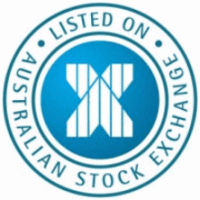
By Chris Weston, Chief Market Strategist at IG Markets
Asia has reacted positively to the strong lead from Wall Street and Europe, although on a pure performance basis seems underwhelmed, although Japan is leading the charge here.
Markets had a little wobble early Monday, but have regained composure and pushed up convincingly again, largely thanks to some appeasing comments from Vladimir Putin, who clearly would have been affected by the $55 billion hit to its market on Monday, with the added impact of utilising a sizeable amount of its foreign exchange reserves to support the ruble.
The fact the Russia has stopped providing natural gas to the Ukraine for a $3.73/mmBtu discount highlights that while the threat of military action has fallen markedly, it wants to maintain a strangle hold on the Ukraine economy. All in all, the Russian economy will avoid economic sanctions that the West would have wanted to avoid imposing anyhow, given the importance of Russian energy and Vladimir Putin avoiding a stock market collapse, subsequent social unrest and a contraction in economic growth.
A peaceful resolution looking likely
So relief has been seen and while most had expected a positive resolution, this has probably come sooner than most had expected. Not that we are fully out of the woods yet anyhow, as this situation is still unpredictable. Keeping in the geo-political theme, only today we’ve heard antagonistic comments from Chinese Premier Li Keqiang aimed at Japan, that no country can ‘reverse the course of history’, showing the China/Japan relationship is always one that has the premise to cause a real volatility in world markets. Although the prospects of a major escalation are very low judging by current public opinion in both countries.
Asia has had its own issues to deal with today, with the National People Congress (NPC) and Australian Q4 GDP. At the margin both were considered positive and naturally we initially saw the AUD finding good buyers, trading up to test the 99 handle. China maintaining its growth target at about 7.5% was also a modest positive, although this was widely expected and in some ways setting a more loose growth target would provide authorities with much more flexibility to reign in credit, and we know that at the end of the day growth would have held up nicely above 7%.
The other big issue was talk of a default of corporate bond, the first ever. The issue itself is small, but this is an important story and while many will see this as negative I actually see this as positive. How can a modern and effective bond market operate effectively if the people investing in CCC rated junk bonds have no perception of risk? Put simply if you invest in the lowest quality bonds, you have to understand that these are not risk free assets and that is the issue. The government keeps bailing investors out. If China is to have a modern and effective capital market they have to make investors understand the risk scale. That is if you invest in low risk products, expect low returns, invest in high risk products you get better returns but the chance of losing your capital increases. Of course it’s not that simple and this issue has ramifications for credit and how smaller businesses source capital longer-term.
The Australia Q4 GDP print was the fastest pace of growth since late 2012 and was certainly encouraging; however the underlying quality could have been better. If the RBA has tried to push up the contribution of domestic demand contributed towards overall growth, it would be disappointed here, with domestic demand increasing by a mere 0.1% on the quarter and 1.2% on the year. On the other side of the coin net exports made up 2.3 percentage points of the 2.8% annual growth, so the rotation that the RBA was hoping to see hasn’t materialised in this print. No economists should change their interest rate calls based off this print and the importance of the April inflation print for the RBA is significant.
AUD/USD seems stuck in a short-term range of 0.8900 to 0.9000 and trend followers will be well clear of this pair right now.
The ASX found good sellers after pushing to the morning high of 5457, although banks have stayed strong. Technically the market still looks strong and from a trend perspective if traders are long stay, they will most likely stay long right now. Still, valuation wise this market seems fairly valued on 14x, however it has to be encouraging when you see the domestic savings rate fall below 10% (in today’s GDP print), with income growth picking up nicely, which should support profits, hiring and capex.
A big night of economic data
Europe should see modest selling on the open; however traders seem happy to push prices around with some vigour at present. The situation in the Ukraine will continue to be in focus, however given the sizeable moves in gold, fixed income and the unwind of JPY hedges, we are back to where we were late last week. Data is more in play, with European services PMI in focus (although not expected to be materially revised), ahead of tomorrow’s ECB meeting. This promises to be rather interesting, with strategists rolling out their various playbooks to clients, amid talk yesterday of the ECB announcing that it will stop sterilisation bonds bought during its Securities Market Program in 2012 (SMP), which could increase its balance sheet by around 6%
In the US we get the ADP private payrolls (consensus expecting 160,000), while the services ISM is anticipated to show the pace of growth is slowing modestly to 53.0 (on the index). We also get the Bank of Canada rate decision, and while there are risks of further dovish rhetoric we should see its neutral bias re-iterated.